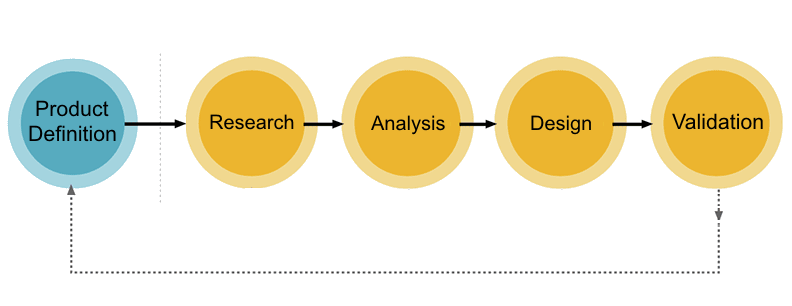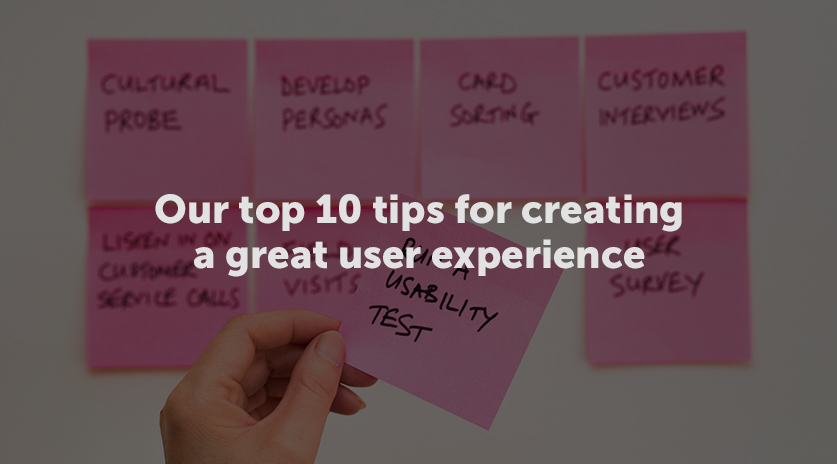We’ve been discussing UX design and development more over the past few weeks. This is part of our new campaign to rid the web of poor UX, and so today we wanted to discuss the process involved in crafting impeccable user experiences online.
This will show you the intricacies involved when creating websites focussed on UX but also the back and forth that is required from all parties involved. UX website design and development can take slightly longer but the end result is worth it.
Although the UX design process differs slightly depending on the remit of the project, two things remain constant as the backbone, which is that the UX design and development process should only have two goals:
- To fully understand the goals and objectives of your (potential) end user.
- To use this information to design a product, service or interface (in our case, a website) that allows the end user to achieve the above objectives in the most seamless way possible.
Each UX team has their own process that they have optimised over time but the general process involved in designing a website that not only allows you to meet your business objectives but is also user-centric can be outlined by the diagram below.

Product Definition
This involves a thorough analysis of the product, the purpose of it and how that purpose relates to the end user. A few critical questions to identify at this stage are:
- What is the value proposition of your product?
- Who exactly is your product for? Be ultra-specific.
- How can your product help your end user- if at all?
These can all be related to your product as well as the resulting website. What journey is the most critical on your website? What are the essential components that would be required on your website? What are the competitors in your market doing well and equally what are they doing wrong?
All of the above points need to be addressed in the pre-research phase, to make sure that your UX project is based on solid foundations. This groundwork can be gruelling but should not be skipped.
Product and Customer Research
The research phase is the most critical of them all, as this is what dictates the rest of the process. This phase involves product research and customer research both of which are essential. Getting to know your customer is a key part of research and shouldn’t be taken lightly. It’s essential to know their core behaviours, their objectives, their goals, motivations and pain points.
Only once you know these can you outline the journey they would have to go through to navigate your website. The more you know what they want, the easier it will be for you to give it to them.
This research phase cannot be carried out in a vacuum; you must approach users or past customers and present surveys and ask questions (through interviews). Usability testing should also be carried out once you have an initial prototype of the website to see how the user reacts to your interface, as what may be intuitive to you may not be for the end user.
If you haven’t already created buyer personas for your product/service this would be a good time to do so, as it allows you to focus on your ideal prospects and design your website with them in mind.
Analysis
So where does all the information gathered during research phase go? The next step is to analyse the information related to the product and the end user and see how it can be used to create an ideal user experience for your interface (or website).
The information can be used to produce different buyer personas for your product, it is very unlikely that you will only have one type of buyer. Generally, the research phase will highlight a number of different buyer personas or avatars of your product/service. You can use this information to highlight the key ones.
Once you understand who your buyer is you will then be able to construct clear buyer journeys on your website, by understanding what it is that they really want.
For example, if your research shows that before making a purchase of your product, potential buyers require in-depth information and a highly technical knowledgebase of stats and facts then you would make that a prominent feature on your website.
However, if you understand that your target market generally buys on impulse then you would make sure that your website is designed to make the purchase process as seamless and quick as possible.
Hopefully, you can now see why the research phase is not something you can miss out as it dictates all the other processes.
Design
Now that you have established the core expectations your end user has in relation to your product, we can move on to the design stage.
Again, this stage is not done in a vacuum it is a highly collaborative and iterative stage, which usually requires input from all parties involved. This phase usually consists of sketches, wireframing of the website, collaboration between design, development and strategy teams as well as the creation of the website prototypes in line with the client brief.
Validation
This is actually the testing phase, where all your hard work prior to this stage is put to the test again.
It involves testing of the platform (website) by key people such as an end user or the client, to see if it’s easy to use and intuitive. This will help you to identify any issues.
Any frustrations with the design should be noted so that they can be changed and optimised, be sure to also listen out for phrases and feedback the end users may give you to indicate anything that could make the design easier for them.
Once you have thoroughly validated the design you can now complete the development of the website inline with these validations, however as UX is constantly evolving and so are your users, your work as a UX designer is never done.
Even when you unleash the well designed and developed website to the real world, there will be tweaks and changes you can make by interpreting key analytics and metrics as well as user flow data to constantly optimise the user experience.
Hopefully, the above outline helps you see what is involved in the UX design and development process. If you would like to discuss a website project further, give us a call.


